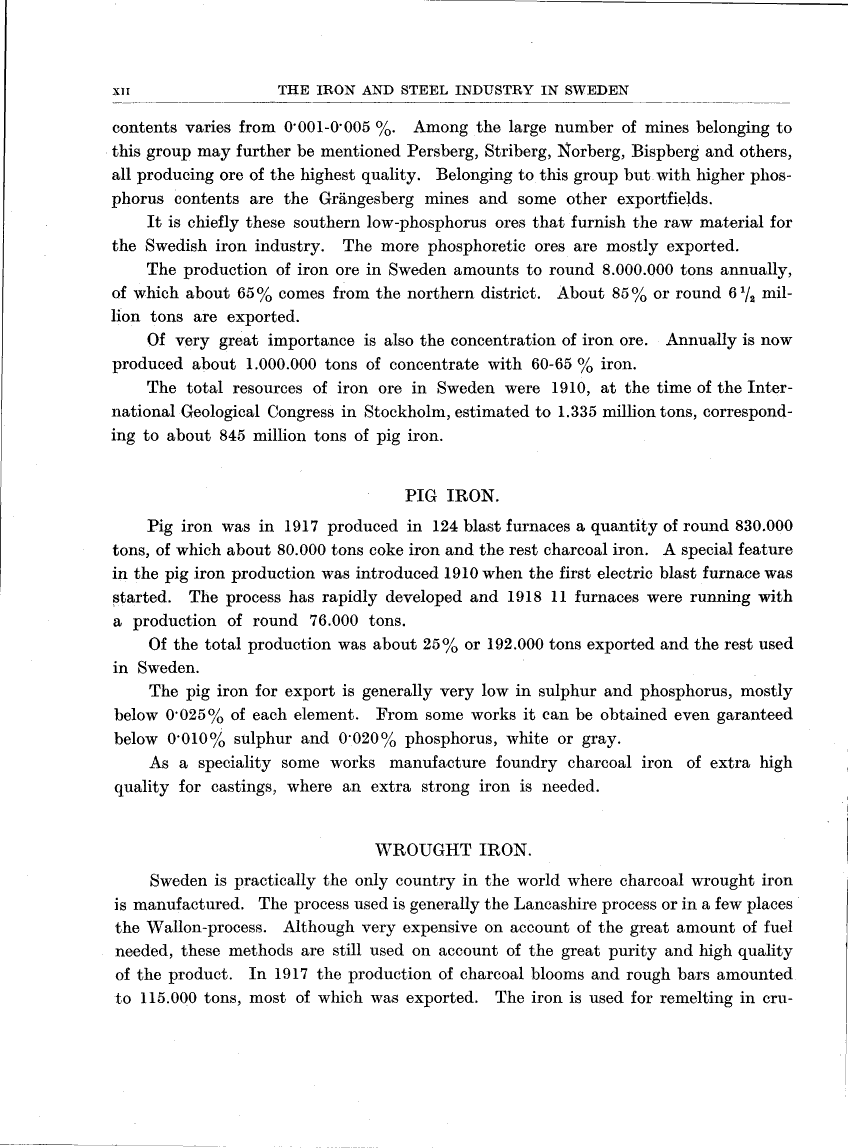
Full resolution (TIFF) - On this page / på denna sida - The iron and steel industry in Sweden

<< prev. page << föreg. sida << >> nästa sida >> next page >>
Below is the raw OCR text
from the above scanned image.
Do you see an error? Proofread the page now!
Här nedan syns maskintolkade texten från faksimilbilden ovan.
Ser du något fel? Korrekturläs sidan nu!
This page has been proofread at least once.
(diff)
(history)
Denna sida har korrekturlästs minst en gång.
(skillnad)
(historik)
contents varies from 0.001-0.005 %. Among the large number of mines belonging to
this group may further be mentioned Persberg, Striberg, Norberg, Bispberg and others,
all producing ore of the highest quality. Belonging to this group but with higher
phosphorus contents are the Grängesberg mines and some other exportfields.
It is chiefly these southern low-phosphorus ores that furnish the raw material for
the Swedish iron industry. The more phosphoretic ores are mostly exported.
The production of iron ore in Sweden amounts to round 8.000.000 tons annually,
of which about 65% comes from the northern district. About 85% or round 6 l/2
million tons are exported.
Of very great importance is also the concentration of iron ore. Annually is now
produced about 1.000.000 tons of concentrate with 60-65 % iron.
The total resources of iron ore in Sweden were 1910, at the time of the
International Geological Congress in Stockholm, estimated to 1.335 million tons,
corresponding to about 845 million tons of pig iron.
PIG IRON.
Pig iron was in 1917 produced in 124 blast furnaces a quantity of round 830.000
tons, of which about 80.000 tons coke iron and the rest charcoal iron. A special feature
in the pig iron production was introduced 1910 when the first electric blast furnace was
started. The process has rapidly developed and 1918 11 furnaces were running with
a production of round 76.000 tons.
Of the total production was about 25% or 192.000 tons exported and the rest used
in Sweden.
The pig iron for export is generally very low in sulphur and phosphorus, mostly
below 0.025% of each element. From some works it can be obtained even garanteed
below 0.010% sulphur and 0.020% phosphorus, white or gray.
As a speciality some works manufacture foundry charcoal iron of extra high
quality for castings, where an extra strong iron is needed.
WROUGHT IRON.
Sweden is practically the only country in the world where charcoal wrought iron
is manufactured. The process used is generally the Lancashire process or in a few places
the Wallon-process. Although very expensive on account of the great amount of fuel
needed, these methods are still used on account of the great purity and high quality
of the product. In 1917 the production of charcoal blooms and rough bars amounted
to 115.000 tons, most of which was exported. The iron is used for remelting in
<< prev. page << föreg. sida << >> nästa sida >> next page >>